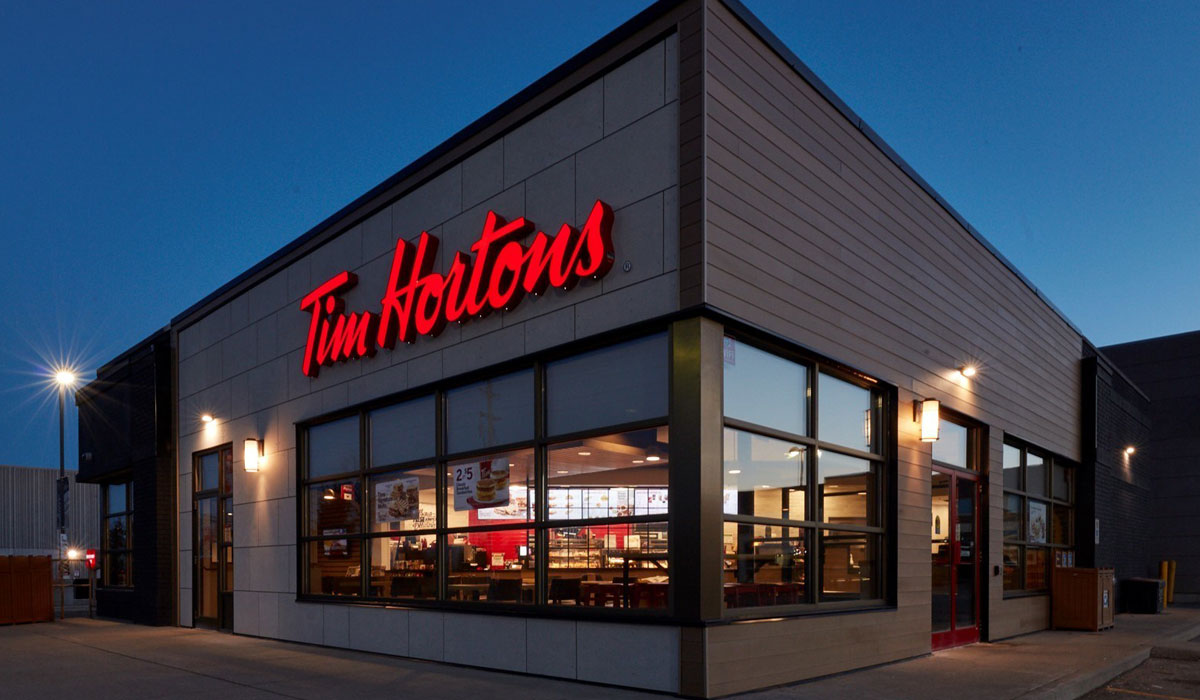Restaurant Brands International has had its hands full with Tim Hortons in recent quarters. The 4,805-unit chain continues to evolve as sales and franchisee sentiment rock back and forth. The third quarter was no different. Tim Hortons grew its systemwide sales 3 percent thanks to net restaurant growth of 3 percent and tepid same-store sales gains of 0.6 percent. In Canada, its largest market, comps were up 0.9 percent, reflecting softer U.S. results, which has been a trend in past reports. Systemwide same-store sales were flat last quarter compared with a 0.8 percent dip a year earlier.
Figures do show sequential improvement, like adjusted EBITDA of $299 million or $294 million under prior accounting standards—a year-on-year organic increase of 4 percent.
RBI chief executive officer Daniel Schwartz said during an October 24 conference call that the comps don’t yet reflect several important “Winning Together” initiatives in Canada that the parent company of Burger King and Popeyes plans to launch in the coming months.
Breakfast sells, and family first
The results do back, however, growth in breakfast foods thanks to Tim Hortons Breakfast Anytime launch introduced last quarter. The chain decided to roll out the program after data showed that all-day breakfast appealed to roughly 75 percent of respondents and about 60 percent of guests said they would likely buy a breakfast sandwich after noon. One-third added that an all-day program would increase their overall frequency.
Meanwhile, in the U.S., weaker sales of brewed coffee and baked goods lagged sales, even with breakfast foods and cold beverages faring better. This isn’t all that different from the challenges Starbucks and Dunkin’ have faced in their business lately. A spotlight toward afternoon and to-go deals, as well as a focus on drinks that are popular past the morning rush, have been a critical element of the stateside java giants’ recent product pushes.
Talking about the Breakfast Anytime initiative, Schwartz said Tim Hortons has “seen healthy levels of incrementality from this program both for restaurant level sales and profitability.”
Tim Hortons is also exploring a kids menu, he said. “Our Tim Hortons restaurants are already heavily visited by families, and despite that our current menu has virtually no dedicated kids offering,” Schwartz noted. “As a business that is highly engrained in local communities across Canada, we believe that we have an opportunity and a responsibility to do better than that. Our goal is to offer a kids menu with products that are both exciting for kids but that also have the right nutrition for parents to feel good about serving them to their children. We plan to launch our kids menu in the coming months.”
New look and feel across the board
Tim Hortons progressed on its Welcome Image redesign in the quarter. A few months after unveiling the refreshed design, Schwartz said RBI completed roughly 100 renovations and anticipates adding hundreds more in Q4.
“So far the feedback from our guests and our restaurant owners has been quite positive,” Schwartz said. “I think it’s a little bit early to talk about sales uplift. I think when you look at that image program, along with the other initiatives that you know that we have, there are really geared toward driving long-term sales growth.”
Additionally, a loyalty program is in pilot across several markets in Canada, with each test market offering a different loyalty structure. “We have seen very high loyalty card adoption rates in these test markets, giving us confidence in the potential of the program,” Schwartz said. “Our current focus is on establishing the most effective offer. Once we’ve established the best mechanism, our goal is to launch the program more broadly, initially using analog loyalty cards and then over time integrating loyalty into the digital channel, including through our mobile app.”
Another note is Tim Hortons narrative in public media. Back in April, Schwartz said a “small group of dissident franchisees,” were driving negative coverage of the brand. And he took some of the blame. RBI is typically a buttoned-up organization when it comes to messaging. Schwartz said they would work to reroute that discussion from a visible standpoint.
He said Tim Hortons made improved, “with our proactive initiatives translating into a much improved narrative in the Canadian media,” this past quarter.
“Our team has proactively spent more time with the media, particularly in Canada to share stories of the exciting things that we have been working on with our restaurant owners and their team members to drive an enhanced experience for our guests,” Schwartz said.
One example was the annual Smile Cookie week, where $1 chocolate chip cookies handmade by Tim Hortons employees are sold to generate 100 percent proceeds to local charities. He said this year’s campaign produced $8 million (Canadian) of total donation proceeds and returned “millions of positive media impressions.”
Another success was the launch of a hockey cards program that included a viral video that secured 270 million media impressions in Canada and the U.S. and already has more than 1.5 million views on Facebook and nearly a million on YouTube. It features hockey All Stars, like Sidney Crosby, visited Kenya’s only ice hockey team.
Brand imagery and packing is changing, too. A hockey-themed doughnut box was introduced this quarter and better coffee lids are coming.
“I think you’re going to see more to come in the fourth quarter and the overall narrative on Tim Hortons and our company has been has been much better,” Schwartz said. “And it’s a function of the collaborative work that we’ve done with our franchisees. And the good plan that we have in place.













